10 Amazing Coffee Break Options Enhance Your Coffee Experience.
Time for a Coffee Break!
Taking a break from work or daily activities to enjoy a cup of coffee is a cherished ritual for many. It’s the perfect opportunity to recharge, relax, and indulge in something delicious. In this blog post, we present ten amazing coffee break options that will elevate your experience.
Whether you prefer a quick bite or a sweet treat, there’s something here for everyone. So grab your favorite cup of joe and let’s explore these delightful options!
1. Butter Croissant:
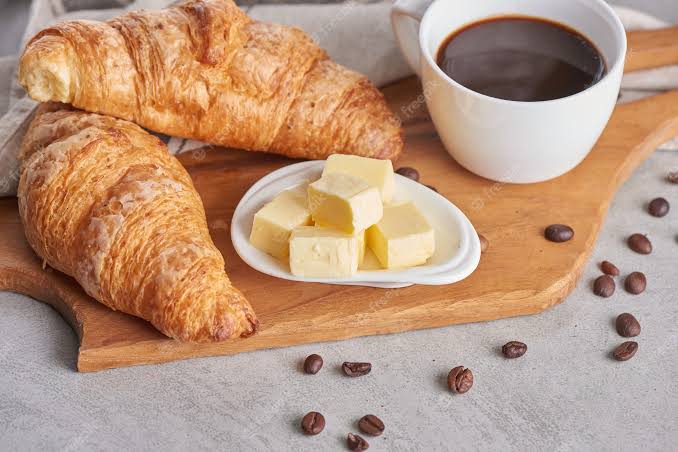
Start your coffee break with a popular butter croissant, this is a popular French pastry known for its flaky, buttery texture and crescent shape. It is made from a dough that is layered with butter, then rolled and folded multiple times to create the characteristic flakiness.
The dough is then shaped into a crescent and baked until golden brown. The result is a delicate, crispy exterior with a soft, airy interior.
The croissant has its origins in Austria, not France. It was inspired by the Austrian “kipferl,” a crescent-shaped pastry, and was brought to France in the early 19th century.
The French adopted and perfected the recipe, adding their own expertise in baking and pastry-making, and it eventually became an iconic symbol of French cuisine.
The butter croissant complements coffee well for several reasons:
- Contrasting Flavors and Textures: The rich, buttery flavor of the croissant contrasts nicely with the bold and often slightly bitter taste of coffee. This interplay of flavors creates a satisfying balance on the palate.
- Textural Harmony: The croissant’s flaky exterior and soft interior provide a delightful contrast to the hot, liquid coffee. The crunch of the pastry complements the smoothness of the coffee.
- Sensory Experience: Both coffee and croissants have distinct aromas. When you bring them together, the combined aroma enhances the overall sensory experience, making it more enjoyable.
- Cultural Pairing: Over time, the combination of a croissant and coffee has become a cultural pairing, especially in French cafes. This cultural association further adds to the perceived compatibility of the two.
- Breakfast Tradition: Croissants are commonly enjoyed as part of breakfast or brunch, and coffee is a popular morning beverage. The combination of these two items has become a traditional way to start the day in many parts of the world.
Overall, the butter croissant’s buttery, flaky nature and its historical association with coffee culture make it a perfect companion to a cup of coffee, enhancing the overall culinary experience.
De’Longhi Automatic Coffee Machine – AMAZON.com
De’Longhi Signature E.S.E. Coffee Pods – AMAZON.com
DeLonghi Set Container/Pomace Container – AMAZON.com
Simple Modern Travel Coffee Mug Tumbler with Flip Lid – AMAZON.com
2. Almond Biscotti:

Almond biscotti, often simply referred to as biscotti, is a type of Italian twice-baked cookie that is known for its distinctive hard and crunchy texture. The word “biscotti” itself means “twice-cooked” in Italian, which refers to the baking process that gives these cookies their unique texture.
Biscotti are typically made from a simple dough consisting of flour, sugar, eggs, baking powder, and flavorings such as almonds, anise, or citrus zest. The dough is first shaped into a log, baked until it’s firm and slightly golden, then cooled and sliced into individual cookies.
The sliced cookies are then baked again until they become crisp and dry, which contributes to their characteristic crunchy texture.
Biscotti have their origins in Italy, particularly in the region of Tuscany. They were originally created as a durable, long-lasting snack for travelers and soldiers due to their dry and sturdy nature, which made them ideal for carrying on long journeys. Over time, they became popular throughout Italy and beyond, eventually making their way into various cuisines around the world.
Almond biscotti complement coffee for several reasons:
- Texture Harmony: Biscotti’s dry and crunchy texture contrasts well with the smooth and liquid nature of coffee. The act of dipping a biscotti into coffee softens the cookie slightly, making it easier to bite into while also providing a textural counterpoint to the coffee.
- Flavour Pairing: The nutty, toasty flavours of almonds in biscotti complements the rich, roasted flavours of coffee. The subtle sweetness of the biscotti also balances out the bitterness of coffee, creating a harmonious flavours combination.
- Dipping Tradition: Biscotti are often enjoyed by dipping them into coffee. This tradition has become popular because the coffee helps soften the biscotti, making it easier to eat without risking a tooth-breaking crunch.
- Coffeehouse Culture: Biscotti have become a staple in many coffeehouses and cafes around the world. This association has reinforced the idea that biscotti are an excellent accompaniment to coffee, further contributing to their popularity as a coffee companion.
- Sociable Snacking: The process of enjoying biscotti with coffee can be a leisurely and social experience. It encourages taking small bites and sips, prolonging the enjoyment of both the cookie and the coffee.
In summary, almond biscotti’s dry, crunchy texture and nutty flavour make them an ideal pairing with coffee. The interplay of textures and flavours enhances the overall coffee-drinking experience, making it a delightful combination enjoyed by many.
3. Fruit Parfait:
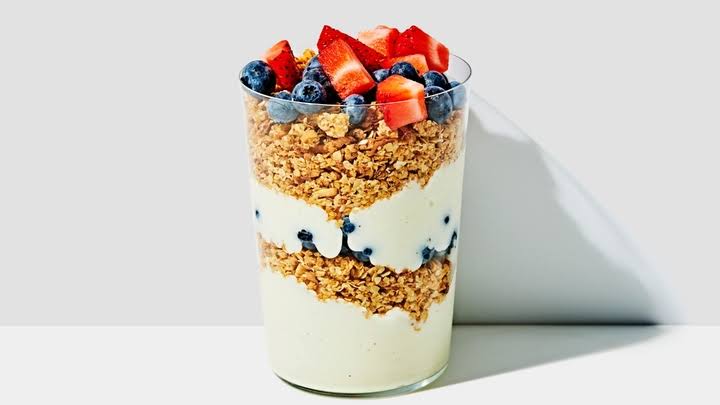
A fruit parfait is a layered dessert or breakfast dish that typically consists of yogurt, granola, and layers of fresh fruit. The word “parfait” is French, meaning “perfect,” and it aptly describes the visually appealing and delicious nature of this dish.
Parfaits are often served in clear glass or plastic cups or bowls to showcase the colorful layers.
The basic components of a fruit parfait include:
- Yogurt: Often Greek yogurt or another thick, creamy variety is used as the base. It provides a tangy and rich flavor while also adding a creamy texture.
- Fruit: Fresh fruits like berries (strawberries, blueberries, raspberries), kiwi, mango, or peaches are commonly used to create colorful and flavorful layers.
- Granola: Granola adds crunch and texture to the parfait. It’s usually layered between the yogurt and fruit, offering a contrast to the smooth yogurt and juicy fruit.
The concept of parfaits is not limited to just fruit and yogurt; they can also include other variations, such as chocolate, nuts, whipped cream, and various types of sauces.
As for why fruit parfaits are great with coffee:
- Balance of Flavors: The sweetness of the fruits and the creaminess of the yogurt in the parfait provide a nice contrast to the robust and slightly bitter flavors of coffee, creating a balanced taste experience.
- Textural Variety: Just like with the balance of flavors, the different textures in a fruit parfait (creamy yogurt, juicy fruit, and crunchy granola) add a pleasant contrast to the smoothness of coffee.
- Light and Refreshing: Fruit parfaits are often light, refreshing, and not overly heavy, making them a suitable accompaniment to a cup of coffee, especially during breakfast or as a mid-morning snack.
- Complementary Nutrients: Combining a fruit parfait with coffee can provide a mix of nutrients. The fruits offer vitamins and natural sugars, while the yogurt provides protein and probiotics. This pairing can contribute to a well-rounded and satisfying meal or snack.
- Culinary Variety: Just as coffee comes in many varieties and flavors, so do fruit parfaits. You can experiment with different fruits, yogurt flavors, and granola combinations to find pairings that best suit your taste preferences.
In summary, the combination of creamy yogurt, fresh fruits, and crunchy granola in a fruit parfait provides a delightful contrast to the flavours and textures of coffee, making it a tasty and visually appealing companion to your morning cup of joe.
4. Chocolate Truffles:
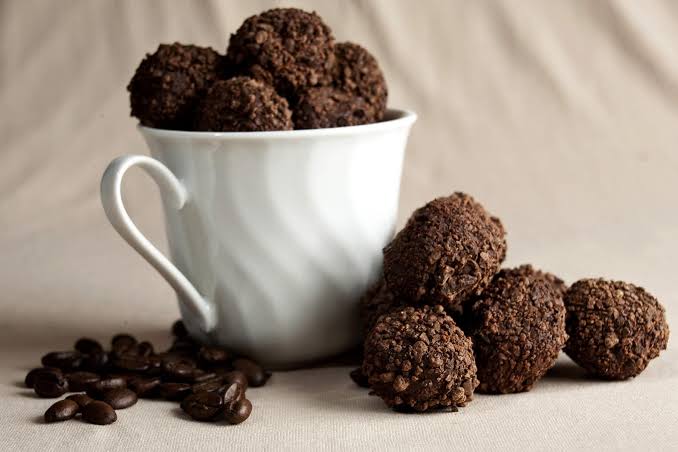
A chocolate truffle is a small, rich confection made primarily from chocolate ganache, which is a mixture of finely chopped chocolate and heavy cream. Truffles are usually rolled into small balls and then coated in cocoa powder, powdered sugar, nuts, or other toppings.
They are named after the edible fungi known as truffles because of their similar appearance. The history of chocolate truffles is a bit uncertain, but they are believed to have originated in France in the late 19th century.
The exact origin story varies, with some attributing their creation to a French pastry chef named Louis Dufour or to Auguste Escoffier, a renowned French chef. Regardless of their exact origin, truffles quickly gained popularity due to their luxurious flavour and texture, and they have become a beloved treat worldwide.
As for why chocolate truffles pair well with coffee:
- Flavour Harmony: Chocolate truffles are decadent and often have intense chocolate flavour, which complements the rich and slightly bitter notes of coffee. The sweetness of the truffle can balance out the bitterness of the coffee, creating a harmonious taste experience.
- Indulgent Experience: Both coffee and chocolate truffles are associated with indulgence and luxury. Combining the two creates a special treat that enhances the overall experience of enjoying these delights.
- Texture Contrast: The smooth, velvety texture of a chocolate truffle contrasts with the liquid nature of coffee. This combination of textures adds depth and dimension to the overall enjoyment of the pairing.
- Comforting Combination: Coffee and chocolate are often associated with comfort and relaxation. The combination of a warm cup of coffee and a rich, luscious truffle can create a cozy and comforting experience.
- Shared Moments: Enjoying coffee and chocolate truffles can be a social and leisurely activity. Sharing a plate of truffles and sipping coffee with friends or loved ones can enhance the bonding experience.
- After-Dinner Delight: Chocolate truffles are often enjoyed as a dessert, and coffee can serve as a satisfying after-dinner drink. The combination makes for a delightful ending to a meal.
In summary, the luxurious and rich nature of chocolate truffles pairs well with the flavours, aromas, and experience of coffee. The combination offers a delightful sensory experience that appeals to the senses of taste, texture, and aroma.
5. Cheese and Crackers:
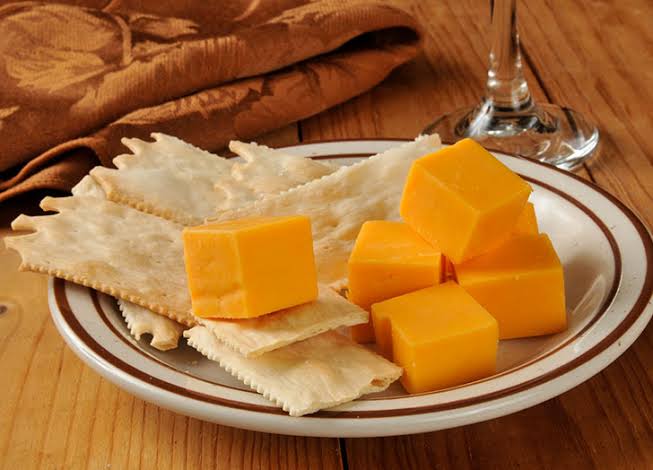
Cheese and crackers are a popular snack or appetizer that typically consists of slices or chunks of cheese paired with various types of crackers. This combination offers a blend of flavours, textures, and often complementary profiles that make it a versatile and enjoyable pairing.
While the exact origin of cheese and crackers is not documented, it’s believed to have developed over time as a simple and convenient snack.
Flavors and Varieties:
- Cheese: The flavours of cheese can vary widely, ranging from mild and creamy to sharp and tangy. There are numerous types of cheese available, such as cheddar, brie, gouda, blue cheese, and many more. Each type brings its own unique flavour profile to the pairing.
- Crackers: Crackers come in various forms and flavours as well. Some are plain and neutral, while others are seasoned with herbs, spices, or even cheese themselves. The texture of crackers can also vary, from crispy and thin to thicker and more substantial.
Why Cheese and Crackers Match Coffee:
- Contrasting Flavors: Coffee often has a complex flavour profile with varying levels of bitterness, acidity, and richness. The creamy, savoury, and sometimes salty flavours of cheese can provide a pleasing contrast to the coffee’s characteristics, creating a harmonious taste experience.
- Balanced Bites: Combining cheese and crackers with coffee allows you to create balanced bites. The cheese provides protein and fats, while the carbohydrates from the crackers offer a satisfying texture and additional flavours. This combination can help sustain you and provide a feeling of fullness.
- Savory and Aromatic: The aromas of coffee, along with the savoury and sometimes nutty flavours of cheese, can intertwine and create an inviting sensory experience. The combined scents can enhance the overall enjoyment of both the food and the drink.
- Social and Comforting: Sharing a plate of cheese and crackers over a cup of coffee can be a social and comforting activity. The combination encourages conversation and relaxation, making it suitable for gatherings or moments of leisure.
- Versatile Pairing: The diverse flavors of cheese and crackers make this pairing adaptable to different types of coffee. Whether you’re sipping a mild brew or a strong espresso, you can find a cheese and cracker combination that complements the coffee’s taste.
In summary, cheese and crackers offer a range of flavours, textures, and aromas that can complement and enhance the experience of enjoying coffee. The contrast and balance between the savoury, creamy cheese and the rich, sometimes bitter notes of coffee create a delightful culinary experience.
6. Coffee Cake:
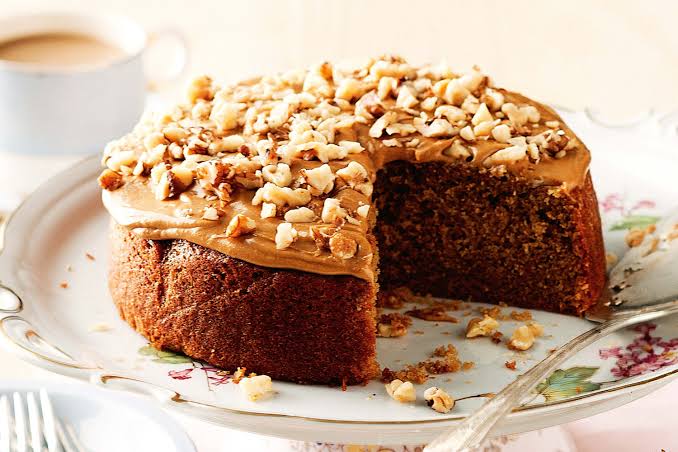
Coffee cake is a type of cake that is often associated with being enjoyed alongside a cup of coffee. It typically has a crumbly or streusel topping and is designed to be a comforting and flavourful treat to accompany your coffee break.
Origin: The term “coffee cake” itself doesn’t refer to a specific origin, but rather to a type of cake that pairs well with coffee. Coffee cakes have been enjoyed in various cultures around the world for centuries. The concept of having a sweet pastry or cake with coffee likely dates back to European coffeehouses in the 17th and 18th centuries.
Over time, different regions and cultures have developed their own variations of coffee cake.
Varieties: There are numerous variations of coffee cake, each with its own unique ingredients and flavours. Some common types of coffee cake include:
- Classic Streusel Coffee Cake: This type of coffee cake features a crumbly streusel topping made from a mixture of flour, sugar, butter, and sometimes nuts or spices. The streusel adds a deliciously textured and slightly crunchy layer to the cake.
- Marble Coffee Cake: Marble coffee cake is made by swirling together layers of plain and chocolate or cinnamon-flavoured batter, creating a marbled appearance when sliced. This offers a mix of flavours and visual appeal.
- Sour Cream Coffee Cake: Sour cream is added to the batter to create a moist and rich texture. It often features a streusel topping and can include various fillings like fruit, nuts, or spices.
- Cinnamon Roll Coffee Cake: Inspired by cinnamon rolls, this type of coffee cake features layers of dough with cinnamon and sugar, sometimes rolled up and sliced before baking.
- Fruit-Filled Coffee Cake: This variety includes fresh or dried fruits, such as berries, apples, or peaches, layered within the cake. The fruit adds a natural sweetness and moisture to the cake.
Complementing a Coffee Break: Coffee cake is an ideal accompaniment to a coffee break for several reasons:
- Flavors Harmony: The flavours of coffee cake often feature warm, comforting spices like cinnamon and nutmeg, which pair well with the aromatic qualities of coffee.
- Texture Contrast: The tender cake and crumbly streusel topping create a pleasant textural contrast that can enhance the sensory experience when enjoyed alongside a hot cup of coffee.
- Balanced Sweetness: Coffee cakes tend to be mildly sweet, which balances nicely with the bitterness of coffee, ensuring that neither flavour overpowers the other.
- Sharing and Socializing: Coffee cake is often served in larger portions, making it suitable for sharing with friends, family, or colleagues during a coffee break, fostering social interaction.
- Comforting Ritual: The act of having a slice of coffee cake with your coffee can become a comforting ritual that punctuates your break with a sense of coziness and indulgence.
Ultimately, the specific type of coffee cake you choose will depend on your personal taste preferences. Whether you opt for a classic streusel coffee cake or explore other variations, the goal is to create a harmonious and satisfying pairing with your coffee break.
7. Dark Chocolate-Covered Espresso Beans:
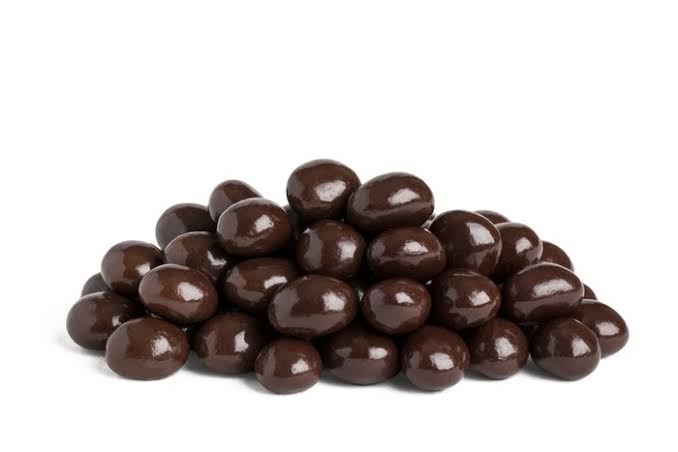
Dark chocolate-covered espresso beans are a popular treat enjoyed by many coffee enthusiasts. They combine the rich flavours of dark chocolate with the bold and intense taste of espresso beans.
Origin: The exact origin of dark chocolate-covered espresso beans is not well-documented, but it’s likely that they originated as a product to cater to people who enjoy both coffee and chocolate.
The combination of coffee beans and chocolate is a natural fit, given the complementary flavors and the popularity of both ingredients.
Varieties: There are various varieties of dark chocolate-covered espresso beans, including:
- Different Types of Espresso Beans: The variety of espresso beans used can impact the flavor profile. Different types of coffee beans from various regions can provide unique tastes, acidity levels, and aromatic qualities when combined with dark chocolate.
- Chocolate Content: The type of dark chocolate used can vary in terms of cocoa content and sweetness. Higher cocoa content dark chocolate offers a more intense and bittersweet flavor, while lower cocoa content may be slightly sweeter.
- Flavor Additions: Some variations might include additional flavorings such as sea salt, spices, or even other types of nuts. These additions can enhance the overall taste experience.
- Coating Thickness: The thickness of the chocolate coating can vary, affecting the balance between the coffee bean’s flavor and the chocolate.
Complementing Coffee: Dark chocolate-covered espresso beans are a delightful accompaniment to coffee in a few ways:
- Flavor Harmony: Dark chocolate’s deep, slightly bitter and rich flavors complement the bold and robust taste of coffee. The bitterness of the chocolate can mirror the bitterness of the coffee, creating a harmonious flavor pairing.
- Texture Contrast: The crunchy texture of the espresso bean contrasts with the smoothness of the chocolate, adding an interesting textural element to the coffee experience.
- Caffeine Boost: If you’re looking for an extra caffeine kick, munching on dark chocolate-covered espresso beans can provide a dose of caffeine alongside your coffee, intensifying the overall effect.
- Palate Cleanser: The flavor transition from coffee to chocolate-covered espresso beans can serve as a palate cleanser, allowing you to reset your taste buds between sips of coffee.
- Indulgent Treat: Enjoying these beans as a treat alongside your coffee can elevate your coffee-drinking experience, turning it into a moment of indulgence.
Remember, taste preferences are subjective, so it’s worth experimenting with different varieties and combinations to find what works best for you. If you’re a coffee lover, you might find the combination of dark chocolate-covered espresso beans and coffee to be a delightful pairing that enhances your overall enjoyment of both flavours.
8. Greek Yogurt with Honey and Nuts:
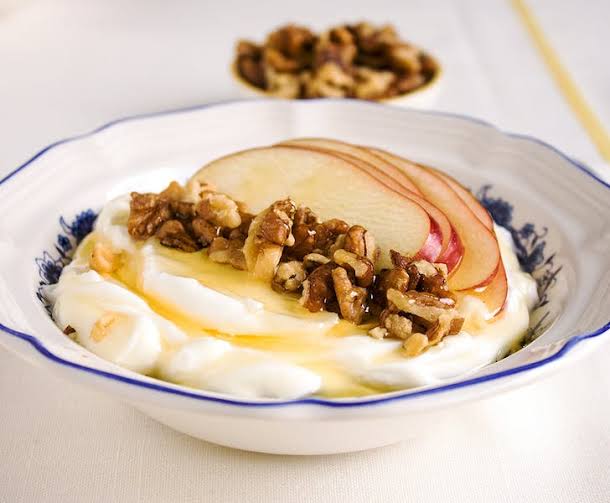
Greek yogurt with honey and nuts is a popular and nutritious snack or breakfast option that can pair well with coffee. This combination offers a mix of textures, flavours, and nutrients that can enhance your coffee experience.
Complementing Coffee: Greek yogurt with honey and nuts can complement coffee in several ways:
- Creaminess and Crunch: The creamy texture of Greek yogurt contrasts with the crunchy texture of nuts, creating a satisfying mouthfeel. This contrast can add depth and variety to your coffee break.
- Balanced Sweetness: Greek yogurt offers a tangy and slightly sour flavour that balances well with the natural sweetness of honey. This balance can help harmonize with the bitterness of coffee.
- Nutritional Boost: Greek yogurt is high in protein and probiotics, which can provide sustained energy and support digestion. The healthy fats and protein in nuts can also help keep you feeling full and satisfied.
- Texture Variation: The combination of smooth yogurt, gooey honey, and crunchy nuts provides a pleasant sensory experience that can complement the tactile aspects of sipping coffee.
- Elevated Experience: The luxurious nature of Greek yogurt with honey and nuts can elevate your coffee break, turning it into a more indulgent and enjoyable moment.
Origin and Variations: Greek yogurt with honey and nuts has Mediterranean origins and is reminiscent of traditional Greek cuisine. In Greece, this combination is often referred to as “Yiaourti me Meli kai Karidia.” Honey has been a staple sweetener in Greek culture for centuries, and nuts like walnuts and almonds are commonly found in various dishes.
Variations of this combination can include:
- Yogurt Types: Beyond Greek yogurt, you can use other yogurt varieties like regular plain yogurt or Icelandic skyr.
- Honey Types: Different types of honey, such as wildflower, clover, or chestnut, can impart varying levels of sweetness and distinct floral or herbal flavors.
- Nut Varieties: Nuts like almonds, walnuts, pistachios, and hazelnuts can be used. They can be raw, toasted, or even candied for added flavor and texture.
- Additional Ingredients: You might incorporate other ingredients like fresh fruit, dried fruits, chia seeds, granola, or spices like cinnamon for added complexity.
- Serving Style: You can layer the ingredients in a bowl, mix them together, or create a parfait-style presentation.
Remember that personal preferences vary, so feel free to experiment with different combinations and proportions to find the balance that suits your taste. Greek yogurt with honey and nuts offers a nutritious, flavourful, and enjoyable way to enhance your coffee break or start your day on a delicious note.
Moccona Classic Dark Roast Freeze Dried Instant Coffee, 400g – AMAZON.com
L’OR Espresso Ultimo Intensity Compatible with Nespresso Machines – AMAZON.com
De’Longhi Nespresso Essenza Mini Capsule Coffee Machine – AMAZON.com
Portable Espresso Machine Travel – 12v Car Coffee Maker – AMAZON.com
9. Cinnamon Roll:

A cinnamon roll is a sweet pastry made from a rolled sheet of dough that is filled with a mixture of cinnamon, sugar, and butter. The rolled dough is then sliced into individual rounds, which are baked until golden and often topped with icing or glaze. Cinnamon rolls are known for their soft, tender texture, rich flavor, and the distinct aroma of cinnamon.
Origin: The exact origin of the cinnamon roll is not definitively known, but it is believed to have European roots. Cinnamon itself was a prized spice in ancient times and was introduced to Europe through trade routes. The concept of using spiced fillings in rolled pastries likely evolved over time. Cinnamon rolls are similar to other traditional sweet treats like cinnamon twists and Swedish “kanelbullar” (cinnamon buns).
Cinnamon rolls became particularly popular in North America and are often associated with American breakfast and brunch culture. They have also been adopted and adapted in various ways around the world.
Complementing a Coffee Break: Cinnamon rolls are an ideal accompaniment to a coffee break for several reasons:
- Flavour Harmony: The warm, aromatic spice of cinnamon in the roll’s pairs beautifully with the rich, complex flavours of coffee. The sweetness of the rolls and the bitterness of coffee create a harmonious balance of flavours.
- Texture Contrast: The soft, pillowy texture of a freshly baked cinnamon roll contrasts with the smoothness of a cup of coffee, creating a delightful combination of sensations in each bite.
- Comforting Indulgence: Both coffee and cinnamon rolls evoke feelings of comfort and indulgence. The combination of the two can create a truly satisfying and comforting experience during a break.
- Sensory Pleasure: The enticing aroma of cinnamon as the rolls bake can heighten the sensory enjoyment of your coffee break.
- Social and Relaxing: Enjoying a cinnamon roll with your coffee break can provide an opportunity for relaxation and socializing, whether you’re having it alone, with friends, or coworkers.
- Energy Boost: The combination of carbohydrates from the roll and the caffeine from the coffee can provide an energy boost, making it a perfect snack during a mid-morning or afternoon break.
Whether enjoyed as a special treat, a breakfast pastry, or a snack, the combination of a cinnamon roll and coffee can create a memorable and pleasurable break from your daily routine.
10. Macarons:
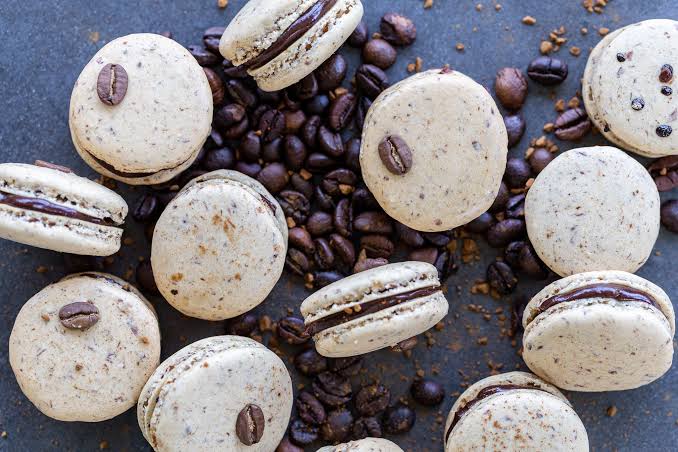
Macarons are delicate and colourful French confections made from almond flour, egg whites, and sugar. They consist of two meringue-based cookies that are sandwiched together with a filling, typically ganache, buttercream, or jam. Macarons are known for their smooth, crisp outer shells and soft, chewy interiors.
They come in a variety of flavours and colours, making them visually appealing as well as delicious.
Ingredients: The main ingredients in macarons include:
- Almond flour or ground almonds
- Egg whites
- Granulated sugar
- Powdered sugar
- Flavorings and food coloring (for the shells)
- Filling (such as ganache, buttercream, fruit curd, or jam)
Origin: Macarons are believed to have originated in Italy during the Renaissance, but they were popularized and refined in France. The modern form of macarons, with the two cookies sandwiching a filling, is often attributed to Pierre Desfontaines of the French pastry shop Ladurée in the 20th century. Macarons quickly gained popularity in France and have since become a symbol of French pastry craftsmanship and elegance.
Complementing a Coffee Break: Macarons are a delightful addition to a coffee break for several reasons:
- Small Indulgence: Macarons are small and bite-sized, making them a perfect treat to enjoy alongside a cup of coffee without overwhelming your palate.
- Flavors Variety: Macarons come in a wide array of flavours, from classic options like vanilla and chocolate to more exotic choices like lavender, pistachio, and raspberry. This variety allows you to pair different macaron flavours with different coffee profiles, enhancing the overall tasting experience.
- Visual Appeal: The vibrant colors and delicate appearance of macarons can add a touch of elegance and beauty to your coffee break.
- Texture Contrast: The combination of the crunchy outer shell and the soft, chewy interior of a macaron can provide a delightful contrast in textures when enjoyed alongside a sip of coffee.
- Balanced Sweetness: Macarons typically have a sweet filling that balances well with the bitterness of coffee, creating a harmonious flavor combination.
- Enhanced Break Experience: Treating yourself to a macaron or two during a coffee break can make the moment feel more special and indulgent, turning a routine break into a mini occasion.
Whether you’re enjoying a macaron with a cup of black coffee or a creamy latte, the interplay of flavours, textures, and aesthetics can enhance the sensory pleasures of your coffee break, making it a more enjoyable and memorable experience.
Conclusion:
A coffee break should be a moment of relaxation and utter enjoyment. Quality coffee and a few moments of utter relaxation deserve to come with a tasty accompaniment. with these 10 incredible compliments to your coffee adding creamy flavours and beautiful texture your next coffee break will be exceptional.

Author.
Brendon McAliece is a multi-lingual expat who brings over three decades of flight simulator/PC building experience as well as over two decades of real world jet fighter experience as a weapons/egress technician.
He holds a sport pilot certificate giving him real-world flying experience. Hi travels have taken him from Europe to the Middle East, Asia and his home of Australia. He has a passion for travel, languages, Flight simulation as well as Guitaring and Coffee. You can read more in his blogs below.


